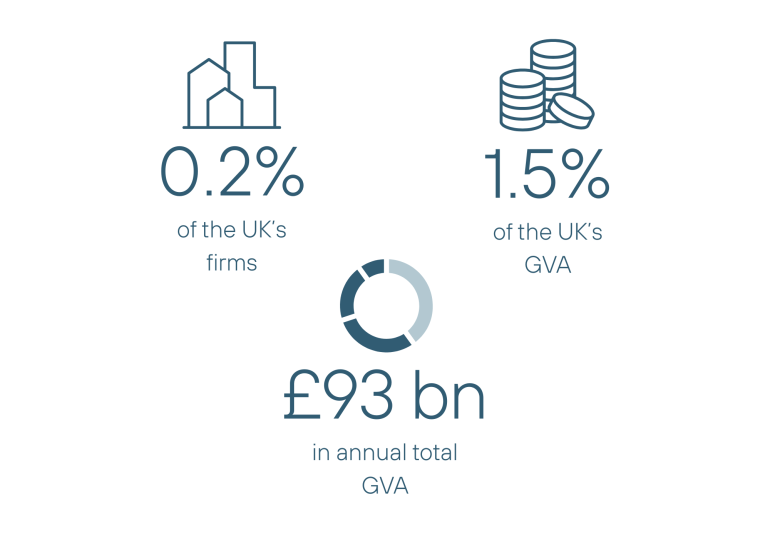
Today, there are more than 9,500 active mutuals in the UK, with more than 7,000 co-operatives and 68.8 million memberships across the co-operative and mutual sector.
Ahead of the 2024 General Election, the Labour Party included a manifesto pledge to double the size of the mutual sector. This was welcomed by many in the mutual sector as a signal that the model’s potential had been recognised. The sector is in agreement that mutual growth could help build a fairer, more resilient and diverse economy. But before that doubling of the mutual sector can be achieved, there is a need to understand both the current state of the nation’s mutuals and its future untapped potential. Therefore, this report was commissioned to measure the sector as it stands and outline the opportunities for – and barriers to – mutual growth.
The mutual sector’s direct GVA alone is estimated to be at least £35 billion, equivalent to 1.5% of the UK economy. However, if you also factor in related knock-on benefits to the supply chain and wider economy, the combined direct, indirect and induced GVA contribution of the mutual sector is at least £93 billion. Our analysis suggests that, considering the relatively small number of mutuals in the UK (more than 9,500 or just 0.2% of UK firms), the sector is actually punching above its weight when compared with other sectors’ GVA.
In GVA terms, to achieve the Government’s manifesto aim of doubling the size of the sector, achieving this over 10 years would mean annual growth of 7.2%, and a growth rate of approximately 34% in total over this Parliament, which is twice as fast as the forecast for economic growth over this Parliament.
While the sector believes that this is the right aspiration, to achieve such growth there are funding gaps and other barriers which need to be tackled first. For this research, we interviewed experts across the sector and surveyed mutual businesses to understand what the most significant barriers are, and how the potential for growth could best be harnessed.

